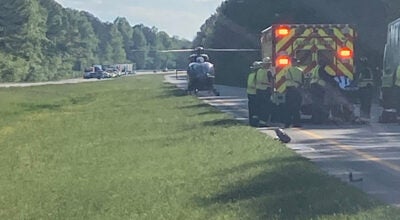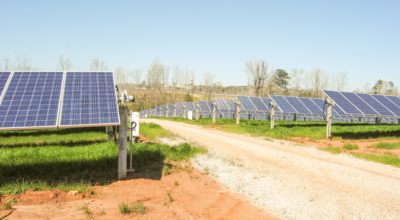High-dose radiation
Published 9:59 pm Saturday, May 22, 2010
Marion Bradshaw has been in and out of doctors’ offices for years for cancer treatments.
She has gone through treatments for breast cancer, stomach cancer and colon cancer, but when her doctor told her it would require a skin graft to remove a penny-sized cancerous growth from her arm, she started looking for another option.
“He had cut a growth off my finger, and it didn’t hurt, but when he told me he was going have to give me a skin graft to remove the one on my arm, it worried me,” Bradshaw said. “I had a brother who had his skin grafted, and it was just awful. I said no.”
On a visit to a third doctor, Dr. Victor Archie, Bradshaw found someone who could help her remove her cancer without a graft.
“I just put my arm on a counter, they used a magic marker to circle the area and used a little machine to give me radiation,” Bradshaw said. “It only took five to 10 minutes. It had a weird light, and when it went off it was through. It was fantastic.”
Bradshaw’s treatment is called high-dose radiation and has been available at Sentara Obici Cancer Center for the past year.
Radioactive seeds are inserted into or near the cancer tumor and removed at the end of the therapy session. They are not left in the body, as in traditional internal radiation therapy treatments, and the process allows more precise control over the amount of radiation delivered and better limits the exposure of nearby healthy tissue.
An additional benefit of the high-dose therapy is that it requires less time and fewer treatments.
“We’ve used it with gynecological cancers, where patients would have had to lay on their back for three days in the hospital,” Archie said. “With high-dose radiation, they come in for one to two hours and go home. It’s an outpatient service.”
Archie said traditional treatments take four to six weeks to complete, but high-dose therapy can be done in seven treatments over two weeks.
“It’s convenient for elderly people and people who can’t take an extended period of time off from work,” Archie said. “It saves gas and time — especially for our patients from Surry and Franklin who have to travel for treatment.”
The procedure is used in gynecological, skin and breast cancer and research on using it to treat prostate cancer is being conducted.
“Its use for skin cancer is on the rise,” Archie said. “More people should know about it — especially, in a farming community, where sun exposure is a way of life.”
Archie said he has also known women who might otherwise have opted to have a mastectomy, but chose the high dose radiation because it could best limit the exposure and be done in a timely manner.
“The goal is to get people back to their lives and as functioning as possible,” Archie said. “This is a tool to do that.”






